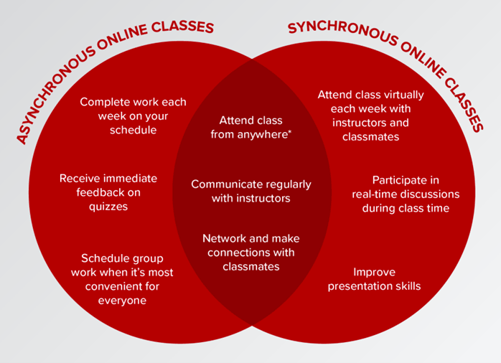Article
Hybrid Learning- Is This a Pedagogical Strategy for Future Teaching and Learning?

In February 2022, Independent Schools Victoria (ISV) published a report that provided insights on how hybrid learning models are perceived among educators in Victoria’s Independent schools. Based on survey responses from 124 participants from 83 schools, the report explored educators’ perceptions of the efficacy of hybrid learning, concerns, and challenges in delivering hybrid teaching, and key drivers for (and features of) effective hybrid learning environments.
Despite the challenges, their findings suggest that there are opportunities for school leaders and teachers to reimagine how education is delivered in ways that better reflect the emerging and changing needs of their students.
What is Hybrid Learning and How Is It Different to Blended Learning?
According to OwlLabs, hybrid learning is an educational model where some students attend class in-person, while others join the class virtually from home. Educators teach remote and in-person students at the same time using tools such as video conferencing. ISV defined hybrid learning in a similar fashion. However, they also added that instructors and facilitators teach remote and in-person learners synchronously or asynchronously using technology like video conferencing.
However, regardless of the minor definition differences, the research indicates that when planned well, hybrid courses combine the best aspects of in-person and online learning while making education more attainable for many students. Basically, for hybrid learning to be successful, the elements of any hybrid course need to be tailored to the learning format, whether it be in-person or online.
The ISV report notes that some educators have confused hybrid learning with another form of pedagogy, “blended learning”. The Christensen Institute, defines blended learning as a “flexible, context-dependent system that usually combines (or blends) components of online learning alongside traditional place-based classroom methods. Many blended learning models still require students to attend physical classes that are complemented by computer-mediated activities. However, these learning experiences offer students some element of control over the time, place, path or pace of learning to encourage flexibility and personalisation”.
What About Asynchronous v Synchronous Online Learning?
“Synchronous” means to happen at the same time and “asynchronous” means that something doesn’t happen at the same time. In the context of online learning, Ohio State Online defines asynchronous online learning as learning that allows students to view instructional materials each week at any time that they choose but does not include a live video lecture component. On the other hand, synchronous online learning means that students are required to log in and participate in class at a specific time each week. Basically, the main difference between asynchronous online learning and synchronous online learning is a live instruction component occurring at a set time.
This Venn diagram from an article on the Ohio State Online website is an excellent summary of the learning styles and how they can be applied in a hybrid learning environment.

© What's the Difference Between Asynchronous and Synchronous Learning?
Juliana Scheiderer
Hybrid Learning Models
There are five hybrid learning models identified within the ISV report that are attributed to John Spencer. Spencer cautions teachers to remember that “If we’re not careful, we can all too easily design lessons that don’t work for students at home or in the physical classroom.” He went on to say that poorly designed hybrid lessons are the equivalent of a ‘spork’ i.e. the ‘worst’ of both worlds.
Spencer’s models are:
- the differentiated model - where all students at home and at school engage synchronously in a common lesson. This is probably the best example of a typical hybrid learning classroom.
- the multi-track model - students work on the same lessons but in different groups and at different times - this can allow for some asynchronous learning.
- the split A/B model - where students alternate between being at home and being at school on different days. However, most of the at-home learning tends to be asynchronous.
- the virtual accommodation model - a form of synchronous learning where there may be a small group working from home, but they are linked to the classroom via another student. This is usually more effective in tertiary classes or maybe upper secondary classes.
- the independent project model - when face-to-face lessons simply will not work off-line and students work in small groups online, independent of the other groups.
Basically, teachers are free to adapt and adopt their teaching styles to suit the needs of their students by giving them access to any of one the five hybrid models described by Spencer- or a combination of them. Spencer, within this article, provides some excellent examples of ‘best practice’ for each of his models.
Why Would Schools Choose to Adopt a Hybrid Learning Model When Schools Are Returning to Regular Timetables?
There are probably a plethora of reasons as to why some schools would want all students back in face-to-face classroom environments. However, there are also some valid arguments as to why they could also be considering the hybrid model. These include:
- There is increased teacher (and student) confidence in online learning management systems and resources and video conferencing apps. The increased use of and accessibility to information technology tools, reliable and functional learning management systems, online lesson creation tools and video conferencing capability make hybrid learning models very real and attractive possibilities.
- There is evidence that some schools that used the hybrid learning model during the COVID pandemic intend to keep this available for students (and possibly teachers too) who, due to COVID infections, are required to isolate but are not so unwell that they cannot continue with their lessons from their homes.
- Virtual schooling options, although not necessarily suited to all students, accommodate students who, for a variety of reasons, find face-to-face teaching and learning in a classroom a difficult prospect due to issues such as general anxiety and fear of COVID transmission. There may also be issues of accessibility and/or damage to the physical school environment due to extreme weather events such as recent torrential rain and floods in many parts of Queensland and New South Wales, so that schools can now call an ‘extreme weather day’ and conduct their classes online.
The ISV asked participants in their research for their report what guided their decision to pursue a hybrid learning model. Most of the respondents stated that hybrid learning arrangements were made to accommodate issues caused by the pandemic, such as supporting students or teachers who were unable to attend school on-site for reasons including disability, travel restrictions or the need to isolate at home.
They also noted that:
“Pandemic-related logistical restrictions aside, teachers’ capability to plan and execute a hybrid model and students’ readiness to learn were also key considerations when deciding whether to pursue a hybrid model. Some concerns include lack of time, online resources, technological competency, student learning outcomes, student wellbeing and engagement.”
The report also noted that 55 per cent of the survey participants who engaged in a hybrid teaching/learning classroom used the differentiated model where students at home and in-person engaged synchronously on the same lesson with the two groups frequently interacting with one another.
From a teaching perspective, in terms of the pros and cons of synchronous and asynchronous online learning, having all the students online or in a classroom at the same time allows for immediate and direct feedback from the students in attendance. It also allows students to engage with each other ‘live’, engage in teacher or student-led discussions or present to the class in real time. In addition, there is no doubt that student feedback during synchronous lessons is essential for teachers to determine if their teaching methodology is appropriate for the concepts being covered and appropriate for the student learners to grasp the concepts. It also reduces the amount of preparation and review time as teachers do not need to then review questions or issues raised by students who are working totally independently of the class in an asynchronous environment. However, asynchronous learning of course offers students the greatest flexibility with their learning time.
What Are the Risks Associated With Hybrid Learning Practices?
Schools that have been using or may be considering hybrid learning environments for future teaching and learning should take note of the risks that are associated with this instructional technique.
These include technical infrastructure risks, managing online learning risks, child safety risks, cyber-attack and data breach risks and even risks of re-transmission of the COVID virus, if schools us a ‘Split A/B’ model with students attending on different days.
UNICEF has noted that there is a much greater increase in the possibility of harm for children due to the changes in the ways of living because of the COVID-19 pandemic. “Under the shadow of COVID-19, the lives of millions of children have temporarily shrunk to just their homes and their screens. We must help them navigate this new reality,” said UNICEF Executive Director Henrietta Fore.
“We call on governments and industry to join forces to keep children and young people safe online through enhanced safety features and new tools to help parents and educators teach their children how to use the internet safely.”
This sentiment has been raised by many educators in numerous forums since online learning became almost a ‘norm’ in certain states and territories during the height of the pandemic.
Schools may also wish to consider this quote from Mel Larsson, CompliSpace Learning Content Manager:
“It does worry me as an educator that, when we provide alternate learning experiences that support the needs of students in one area of their development, we could also be taking away their opportunity to develop their social and communication skills which are essential for successful adulthood.”
Conclusion
The reality is that online options are generally not considered permanent alternatives to classrooms by most schools and teachers, and at best they are a supplementary learning system. Significant changes in pedagogy would be required to take advantage of recent and ongoing innovation in this area. And, like any other pedagogical practices, there are positives and risks associated with hybrid teaching models.
However, we need to keep in mind that the original hybrid models developed by schools and implemented by teachers was implemented in a rush and with limited or no teacher training at all - simply to cope with the number of school closures and the numbers of isolating students and staff due to the COVID-19 pandemic.
This pandemic has been the catalyst for a paradigm shift in teaching and learning to accommodate digital skills and the vastly improved access to the digital world. It has also given schools and school leaders some very much needed reflection time regarding student learning and what can be defined as good pedagogy. The ISV sums it up in this wonderful concluding statement:
“There are opportunities for forward thinking educators to experiment with different learning approaches based on hybrid learning models, particularly if the COVID-19 pandemic and associated school closures or self-isolation continue in coming years.”
About the Author

Craig D’cruz
Resources you may like
Article
Cyber security and AI in schools: emerging risks and governance imperatives
In an era where artificial intelligence (AI) tools are becoming as commonplace as calculators once...
Read MoreArticle
Under 16 social media 'ban’: an explainer for schools
The Australian Government passed a new law called the Online Safety Amendment (Social Media Minimum...
Read MoreArticle
Risk management essentials for schools
Schools face an increasingly complex landscape of risks every day; from safety hazards on school...
Read More
